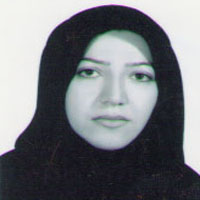The Modeling of Soil Erosion and Prioritizing Sediment Production in Sattarkhan Dam Basin Using MUSLE and SWAT Models
Author(s):
Article Type:
Research/Original Article (دارای رتبه معتبر)
Abstract:
Introduction
Soil erosion is one of the most serious environmental degradation problems that adversely affects many natural and human-managed ecosystems. In agricultural watersheds, soil erosion not only removes nutrient-rich top soil on site, but also degrades water quality as a result of transported sediments off site. The estimation of soil erosion is often complicated due to the complex interplay of many factors such as climate, land cover, soil, topography, lithology, and human activities. Erosion models can be used as predictive tools for soil loss assessment, conservation planning, soil erosion inventories, and project planning. Moreover, models can be used as tools for understanding erosion processes and their impact. They are basically categorized into three types of empirical, conceptual, and physical based models. Empirical models are usually statistical in nature and generally applicable only to conditions for which the parameters have been calibrated. The commonly used empirical soil erosion models are USLE, RUSLE, and MUSLE. Soil erosion based- physical models include AGNPS, WEPP, SWAT, and the like. One of the most widely applied watershed models is SWAT which has been extensively used for simulating hydrologic and water quality processes in watersheds with a wide range of scales and environmental conditions. Iran is among the most affected countries in the world in terms of the extent and intensity of soil erosion. Current estimates suggest that soil erosion in Iran is around 25 tons per hectare annually which is four times greater than the world average. In the Northwest of the country, the Sattarkhan Dam has been constructed on the Aharchay River, which is the source of drinking water, agriculture, and industry in the region. In the catchment area of the Sattarkhan Dam, which includes the Aharchay upstream, physical conditions such as being mountainous and the unstability of land management such as the spread of rainforests with plowing in the direction of gradient and developmental activities cause soil erosion, sediment production, damping reservoir capacity reduction and increasing reservoir sedimentation costs. The goal of this study was to model and evaluate the spatial distribution of soil erosion in the Sattarkhan Dam basin. In this study, Soil and Water Assessment Tool (SWAT) and MUSLE models were served for simulating sediment yield and identifying critical areas of soil erosion in the Sattarkhan Dam basin, located in the North West of Iran.
Methodology
The SWAT model is a continuous-time, semi-distributed, process-based river basin or watershed scale model. It was developed to predict the impact of land management practices on water, sediment and chemical yields in agricultural watersheds with varying soils, land use, and management conditions over a long period of time. It divides a watershed into sub watersheds. Each sub watershed is connected through a stream channel. In addition, each sub watershed is divided into Hydrologic Response Unit (HRU). HRU is a unique combination of soil, land use, and slope type in a sub watershed. SWAT predicts the sediment yield within each HRU using Modified Universal Soil Loss Equation (MUSEL). Sequential Uncertainty Fitting-2 (SUFI-2), a SWAT-CUP2012 sub-module computer program, was applied to optimize the parameters of the SWAT using monthly observed sediment yield data at a monitoring site in the Sattarkhan Dam basin. In this study, sediment discharges data series during 2004-2009 and 2010-2013 were respectively used for model calibration and validation. To evaluate model performance, the statistical methods consisted of the determination coefficient (R2), Nash-Sutcliffe coefficient (NS), and root mean square error observations standard deviation ratio (RSR).
Results and Discussion
Seven highly sensitive parameters were recognized for sediment yield simulation including CN2, ESCO, CH_K2, SMFMN, CH_N2, PRF, and USLE_K. The calibration outputs for simulation showed a very good model performance for sediment yield where the values of R2, NS and RSR were respectively 0.76, 0.95, and 0.06. During the validation period, the annual sediment yield simulation of R2, NS, and RSR values were respectively 0.96, 0.93, and 0.1. Also, the results showed that the spatial pattern of the regions differed in terms of the erosion and sediment production. The critical areas were located in the upper part of the basin and sediment production was very high and high, which included about 34.15% of the area of the Sattarkhan Dam basin.
Conclution
This study showed that the SWAT model is competent of predicting sediment yields and, hence, can be used as a tool for water resource planning and management in the study watershed. The prediction of sediment yield at ungauged watershed with SWAT could be possible under comparable topography, land use, soil management, climate condition for the purpose of soil erosion assessment, scenario analysis, and recommendation of best management practices to support watershed management initiatives in the semi-dry mountainous regions of Iran.Keywords:
Language:
Persian
Published:
Hydrogeomorphology, Volume:5 Issue: 18, 2019
Pages:
115 to 137
https://magiran.com/p1999873
مقالات دیگری از این نویسنده (گان)
-
Evaluation of suitable Areas for physical Development in maku city using the Electra – Fuzzy Method in Arc GIs Environment
Seyed Asadallah Hejazi *, , Saye Habibzadeh
Journal of of Geographical Data (SEPEHR), -
Examining the maximum discharge values on the occurrence of flooding in the dimensionless gamma structure (Case study: Shiraz geomorphic basin)
Shahram Roostaei *, Hasan Eftekhar, , Saeid Negahban
Journal of Natural environment hazards,



